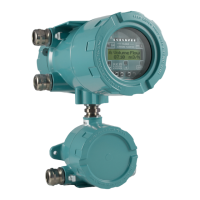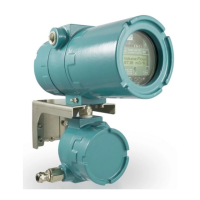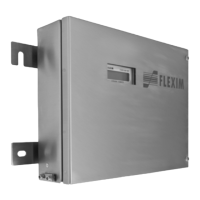8 Connection FLUXUS WW
UMFLUXUS_WWV1-1EN, 2018-02-28 57
8.1.3.2 Connection with potential separation
If earthing on the same potential cannot be ensured e.g., in measurement arrangements with long extension cables, the
extension cables and junction box have to be insulated from each other. The junction box and the transmitter have to be
on the same potential. By doing this, no compensation currents can flow to the transmitter via the extension cables.
• Remove the left blind plug for the connection of extension cable (see Fig. 8.7).
• Open the cable gland of the extension cable. The compression part remains in the cap nut.
• Push the extension cable through the cap nut, the compression part and the basic part.
• Insert the extension cable into the junction box.
• Prepare the extension cable.
• Cut the outer shield to length and brush it back.
• Pull the extension cable back until the brushed back external shield is below the shield terminal (see Fig. 8.7). The exten-
sion cable has to remain completely insulated up to the shield terminal.
• Screw the sealing ring side of the basic part into the junction box.
• Fix the cable gland by screwing the cap nut onto the basic part.
• Fix the extension cable and the external shield to the shield terminal.
• Connect the extension cable to the terminals of the transmitter (see Fig. 8.7 and Tab. 8.6).
Note! For the installation of the transducers on pipes with cathodic corrosion protection, see document
TIFLUXUS_GalvSep.
Attention! Observe the "Safety instructions for the use in explosive atmospheres" (see SIFLUXUS document).
Attention! The external shield of the extension cable must not have electrical contact to the junction box. There-
fore, the extension cable has to remain completely insulated up to the shield terminal.
Fig. 8.7: Connection of the extension and transducer cable to the junction box JBxx
100 mm
20 mm
10 mm
extension cable
shield terminal
external
shield
cap nut
compression part
basic part
cable gland
extension cable transducer cable

